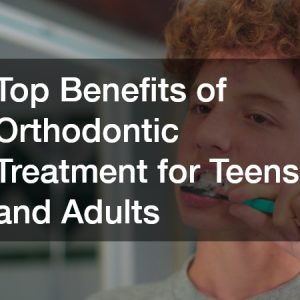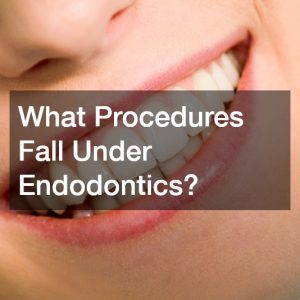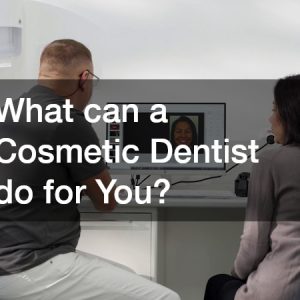Recovering and maintaining oral health has never been more accessible or technologically advanced. From routine check-ups at dentists offices to pioneering therapies in regenerative care, today’s solutions span prevention, treatment, and long-term maintenance. This guide explores where dental care stands now—including the role of tooth implant dentists and root canal specialists—and looks ahead to emerging innovations that promise greater comfort, durability, and personalized outcomes. Along the way, we’ll touch on the day-to-day impacts of factors like restaurant dining choices and household water service quality on your smile.
Preventive Care: The Foundation of Lifelong Oral Health
Preventive measures remain the cornerstone of modern dentistry. Regular cleanings, fluoride treatments, and thorough exams at your local dentists ensure early detection of cavities, gum disease, and malocclusions. A proactive routine not only preserves natural teeth but also reduces the need for more invasive work later.
Beyond chairside care, home hygiene practices—including twice-daily brushing with fluoride toothpaste and daily flossing—help control bacterial biofilms that cause decay. Innovations in smart toothbrushes now track brushing patterns and pressure, guiding patients toward better habits. These digital tools sync with apps, offering personalized feedback that complements professional advice.
The Expanding Role of Dental Practices in Patient Education
Modern dental practices go far beyond filling cavities. Many clinics conduct interactive seminars on nutrition’s impact on oral health, focusing on how sugars from frequent restaurant visits can fuel acid-producing bacteria. By educating patients on food choices, practitioners empower individuals to make decisions that support both overall wellness and lasting smiles.
In addition to dietary counseling, dentists offices increasingly incorporate motivational interviewing techniques. This patient-centered communication model helps individuals set achievable oral care goals—whether improving flossing consistency or reducing sugary beverage intake. Engaged patients report higher satisfaction and better outcomes, illustrating the value of education in routine practice.
Restorative Breakthroughs: From Crowns to Root Canal Evolution
When preventive measures aren’t enough, restorative treatments step in. Traditional fillings and crowns have benefited from advanced ceramics and CAD/CAM milling, delivering restorations that blend seamlessly with natural teeth. Compared to metal-based options of the past, these materials offer superior aesthetics and biocompatibility.
Root canal therapy, once feared for discomfort, now leverages rotary instruments and gentle irrigation solutions that shorten treatment times while preserving tooth structure. Many offices use operating microscopes and digital imaging to pinpoint complex canal systems, reducing the risk of retreatment. As a result, more patients retain their natural teeth, avoiding extractions and prosthetic replacements.
Implant Dentistry: Pioneering Durable Replacements
For those missing one or more teeth, dental implants represent a transformative solution. A skilled implant dentist surgically places a biocompatible titanium post into the jaw, where it fuses with bone—a process called osseointegration. After healing, a customized crown attaches to the post, delivering function and appearance nearly identical to natural teeth.
Emerging protocols now allow some patients to receive temporary crowns on the same day as implant placement. This immediate-load approach reduces treatment time and enhances patient comfort. Meanwhile, innovations in surface coatings and 3D-printed guides are improving precision and predictability, making dental implant therapy accessible to a broader range of candidates.
The Rise of the Tooth Implant Dentist Specialist
As implant procedures grow in popularity, a new generation of tooth implant dentist specialists is emerging. These professionals undergo additional training in oral and maxillofacial surgery or periodontics, focusing solely on implantology and related bone grafting techniques. Their expertise ensures even complex cases—such as those requiring sinus lifts or ridge augmentation—proceed smoothly.
Referrals between general dentists and implant specialists foster a collaborative care model. After surgical placement, patients often return to their primary dental practice for crown fabrication and ongoing maintenance. This team-based approach streamlines care and leverages each provider’s strengths.
Denture Services: Modern Comfort and Stability
While implants suit many, some patients still prefer or require removable prosthetics. Contemporary denture services deliver appliances that surpass past iterations in fit, function, and comfort. Digital impressions and injection molding create lightweight, precise bases that minimize sore spots and slipping.
Implant-supported dentures offer another hybrid solution. By anchoring a denture to two or more implants, patients enjoy enhanced stability without the expense of full arch implant therapy. Maintenance remains simple: remove the denture nightly for cleaning, while enjoying confidence during daily activities.
Digital Dentistry: Scanning, Printing, and AI
Digital tools are revolutionizing workflows in dental offices. Intraoral scanners capture detailed 3D images of teeth and soft tissues, replacing messy putties. These digital files feed directly into 3D printers or milling units, producing provisional restorations, surgical guides, and even clear aligners on-site.
Artificial intelligence (AI) is also entering diagnostics. Early-stage software can flag potential carious lesions or periodontal bone loss on radiographs, assisting clinicians in making timely decisions. As these algorithms refine, they will augment—not replace—clinical judgment, boosting efficiency and accuracy in high-volume practices.
Personalized Treatment Planning and Patient Experience
Patient-centric care means treatments customized to individual anatomy, health history, and lifestyle. Virtual treatment simulators allow patients to visualize outcomes—from implant crowns to gum reshaping—before committing. Interactive consent processes ensure they understand benefits, risks, and costs.
Comfort enhancements enhance the patient journey. Noise-cancelling headphones, warm blankets, and aromatherapy reduce anxiety, while sedation options range from nitrous oxide to oral anxiolytics. Practices that invest in these amenities often report higher patient loyalty and referrals.
Emerging Regenerative Therapies and Biomaterials
Researchers are exploring ways to harness the body’s healing power to regenerate dental tissues. Platelet-rich fibrin (PRF) concentrates growth factors from a patient’s own blood, accelerating soft tissue and bone healing after extractions or implant placement. Early studies show promising results in reducing recovery times and enhancing implant success rates.
Stem cell therapies may one day enable regrowth of entire tooth structures. While clinical application remains years away, lab breakthroughs underscore a future where biological replacements could complement or even supplant current prosthetics.
The Intersection of Oral and Systemic Health
Mounting evidence links periodontal disease with systemic conditions like diabetes, cardiovascular disease, and adverse pregnancy outcomes. A coordinated care model sees dental practices collaborating with physicians to monitor inflammation markers and manage chronic diseases. Regular periodontal maintenance thus becomes a vital component of holistic health.
Hydration and water service quality also influence oral wellness. Fluoridated municipal water reduces decay risk, while mineral imbalances—such as high acidity—can erode enamel over time. Some patients install home filtration systems that maintain beneficial fluoride levels while removing contaminants.
Nutrition, Lifestyle, and the Role of Restaurants
Dietary habits play a foundational role in oral health. Frequent snacking on sugary or acidic foods accelerates enamel demineralization. When dining out, selecting restaurants that offer balanced menus—rich in vegetables, lean proteins, and whole grains—supports both body and teeth.
Many local dentists now provide nutritional counseling or partner with dietitians to craft meal plans that minimize cariogenic ingredients. Encouraging mindful eating practices reduces prolonged acid exposure and fosters appreciation for tooth-friendly cuisine.
Tele-Dentistry and Remote Monitoring
Tele-dentistry surged during recent public health challenges, offering virtual consultations and triage services. Patients can upload photos or real-time video of concerns—such as a loose restoration or gum irritation—and receive preliminary guidance. This model reduces unnecessary trips and expedites in-office care when needed.
Remote monitoring devices are also under development. Wearable intraoral sensors could track pH fluctuations, temperature changes, or masticatory forces, alerting both patient and clinician to potential issues. These data streams promise truly personalized preventive regimens.
Sustainability and Eco-Friendly Practices
As environmental awareness grows, dental offices seek greener operations. LED lighting, digital charting, and sterilization technologies reduce waste and energy use. Biodegradable alternatives to plastic suction tips and patient cups are emerging.
Supply chain innovations aim to source ethically produced materials, from mercury-free amalgam alternatives to sustainably harvested bamboo toothbrushes packaged in recycled paper. Patients increasingly value practices that align with their environmental ethics.
Integrating Robotics and Advanced Manufacturing
Robotic arms are beginning to assist in precise surgical tasks, such as implant drilling guided by pre-planned digital models. These systems promise enhanced accuracy and reduced chair time, though broad adoption will hinge on cost and training considerations.
On the prosthetic side, advanced multi-axis milling machines fabricate zirconia frameworks and crowns with micron-level precision. Coupling robotics with AI-driven design software could one day automate aspects of restoration manufacturing, freeing clinicians to focus on patient care.
The landscape of oral health solutions is evolving at an unprecedented pace. From the everyday expertise of general practitioners to the specialized skills of an implant dentist or a tooth implant dentist, today’s treatments blend art and science to deliver comfort, durability, and natural beauty. As dental practices integrate digital workflows, regenerative therapies, and systemic health collaborations, patients stand to benefit from more personalized, efficient, and sustainable care.
Whether you’re evaluating denture services, considering a root canal referral, or simply seeking guidance on optimal restaurant choices for your smile, staying informed empowers you to participate actively in your oral health journey. Innovations on the horizon—stem cell regeneration, AI diagnostics, robotic surgery—promise to further elevate outcomes. By forging strong partnerships with local dentists and embracing preventive routines at home, you’ll be well positioned to enjoy a lifetime of healthy, vibrant smiles.





